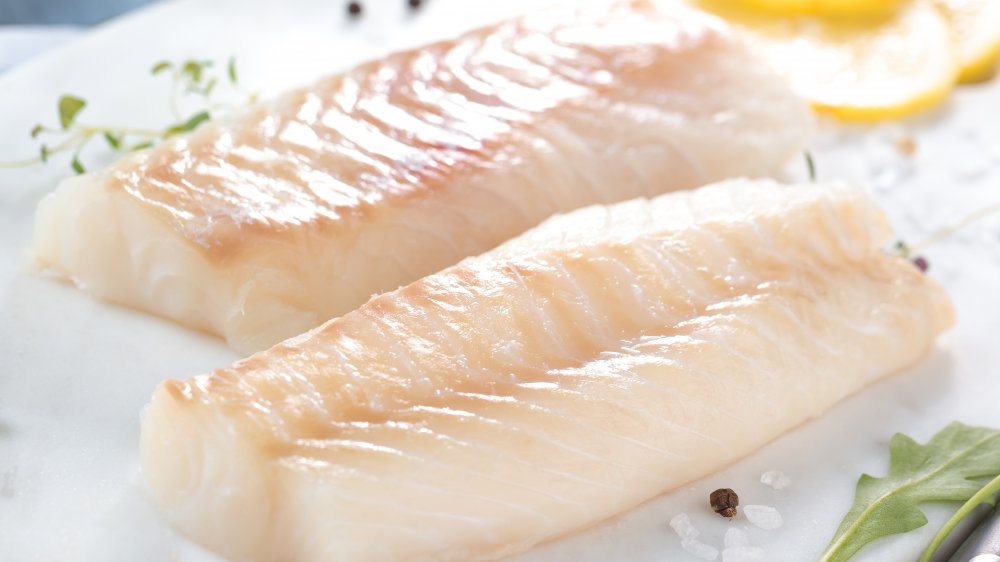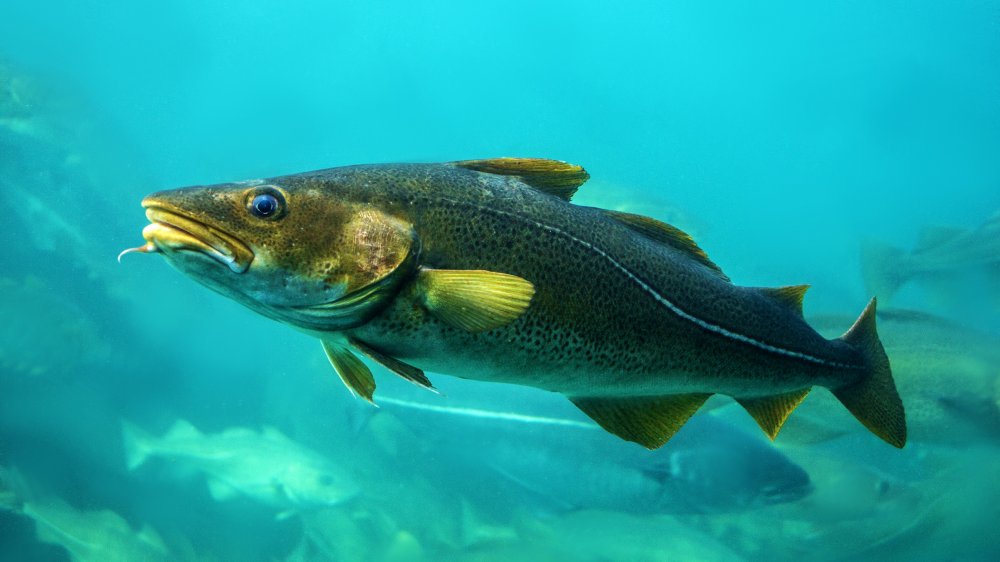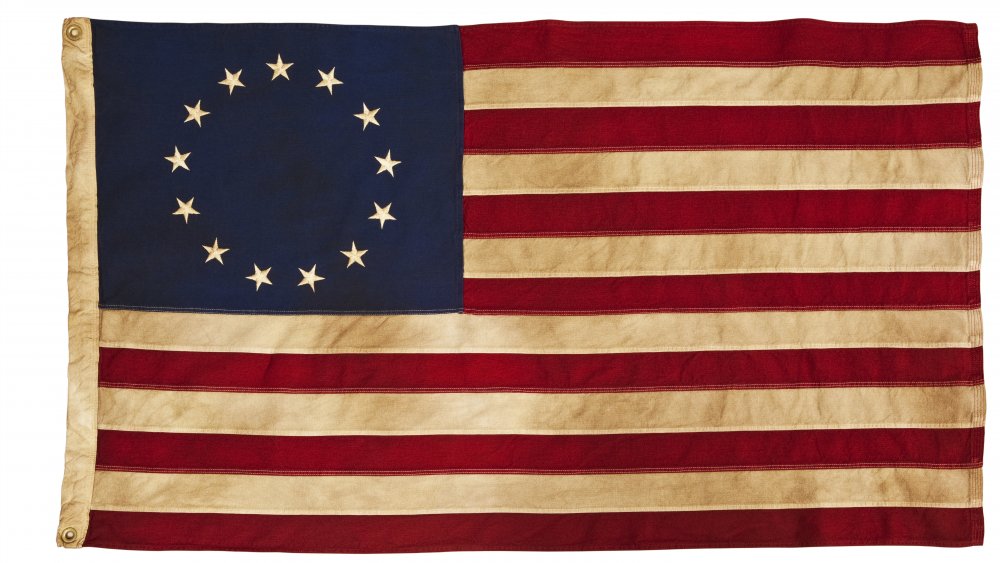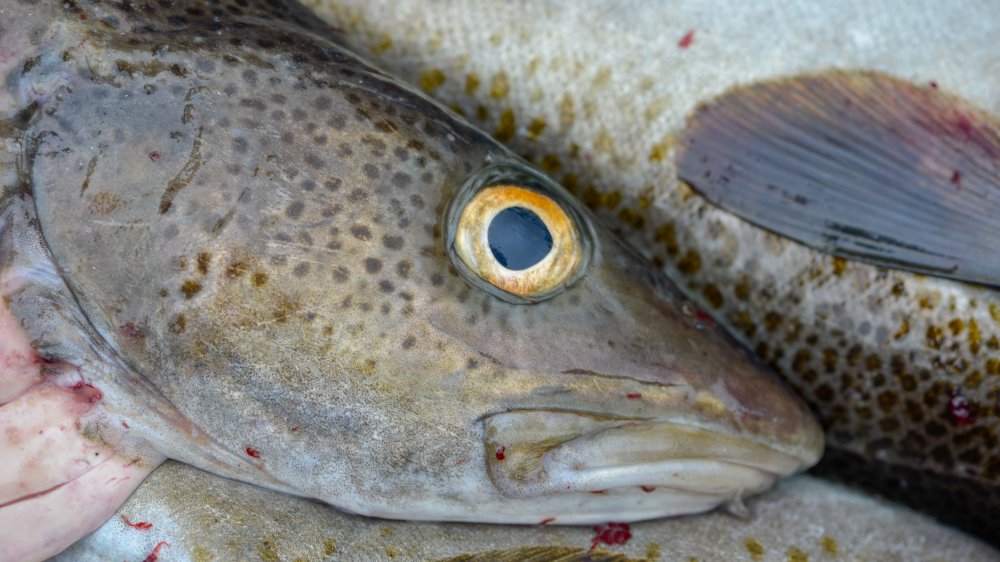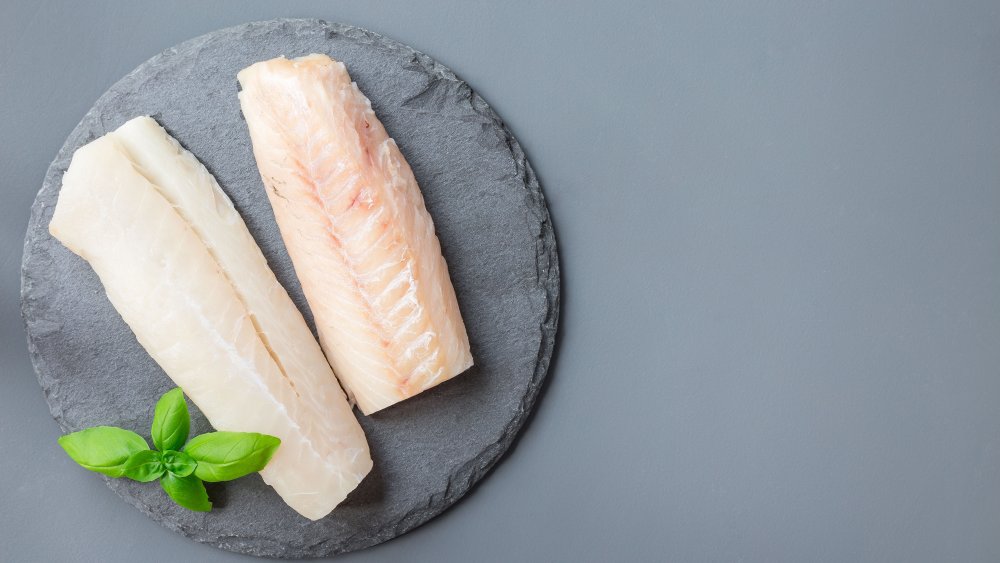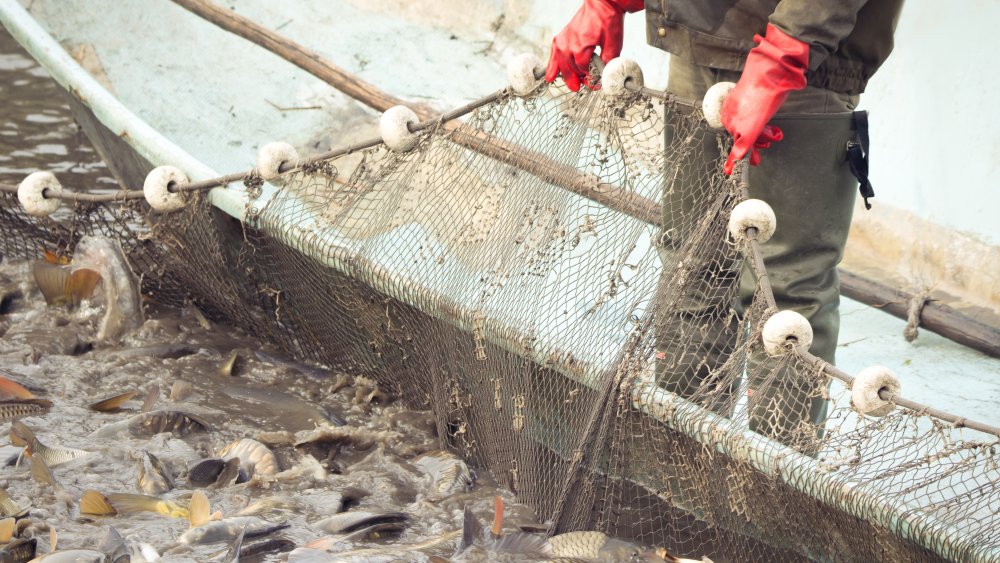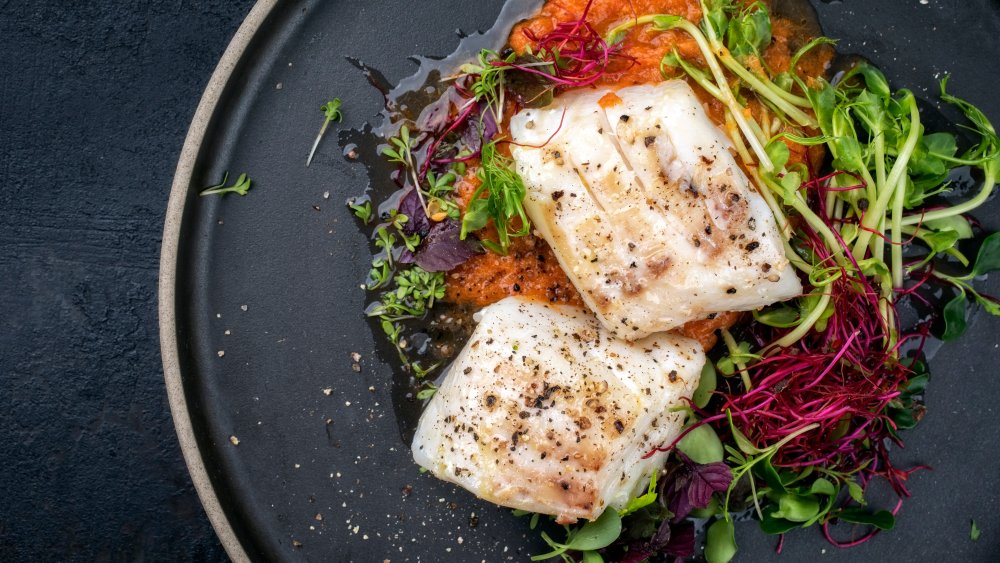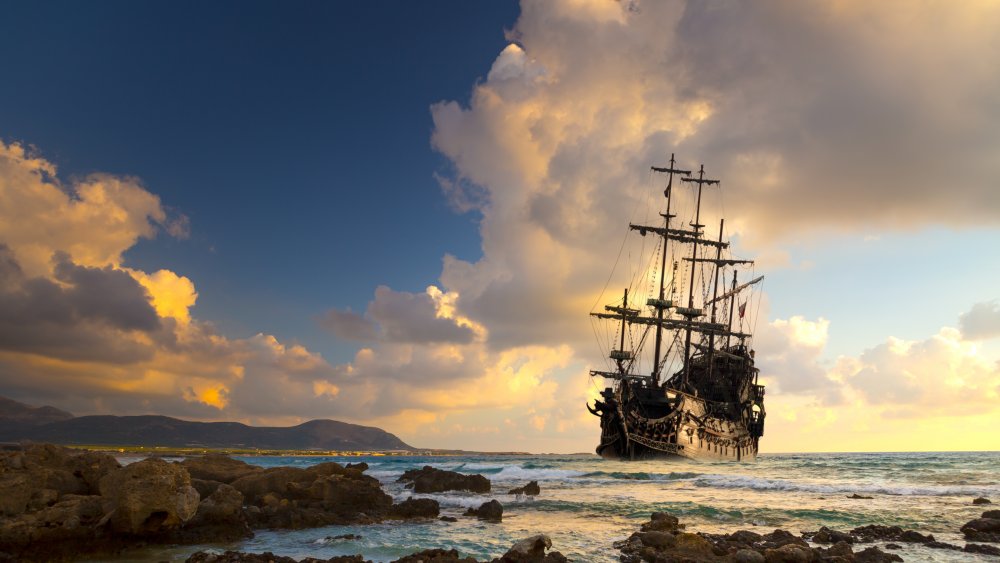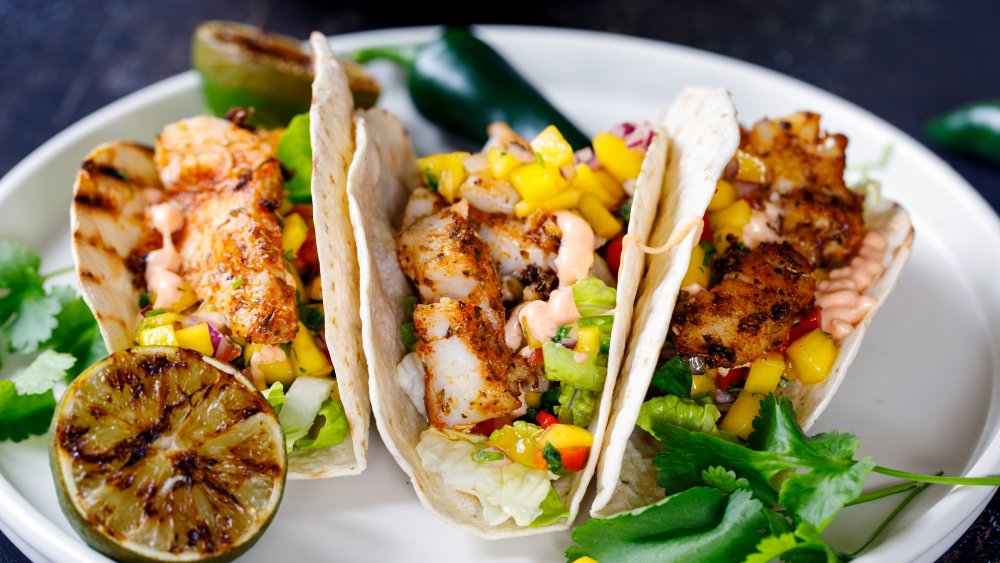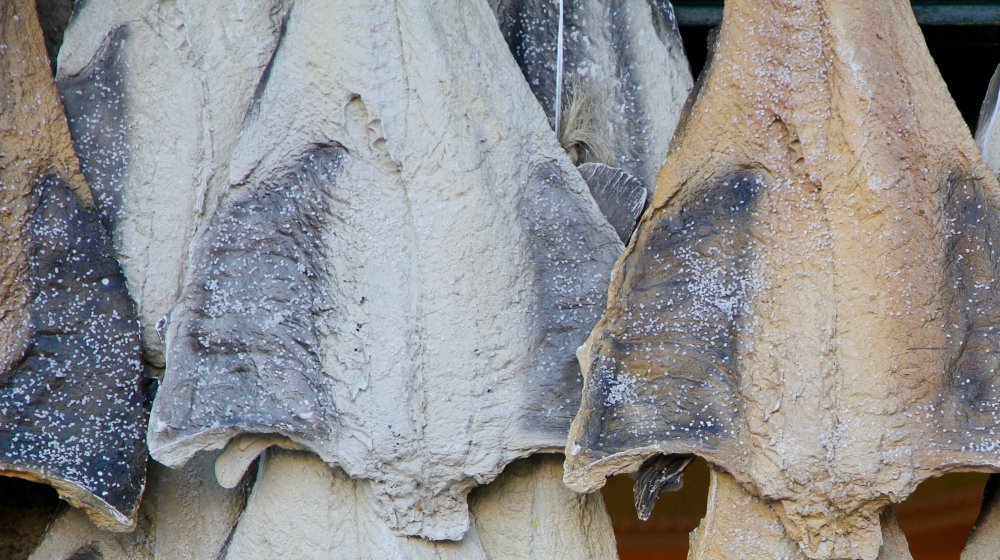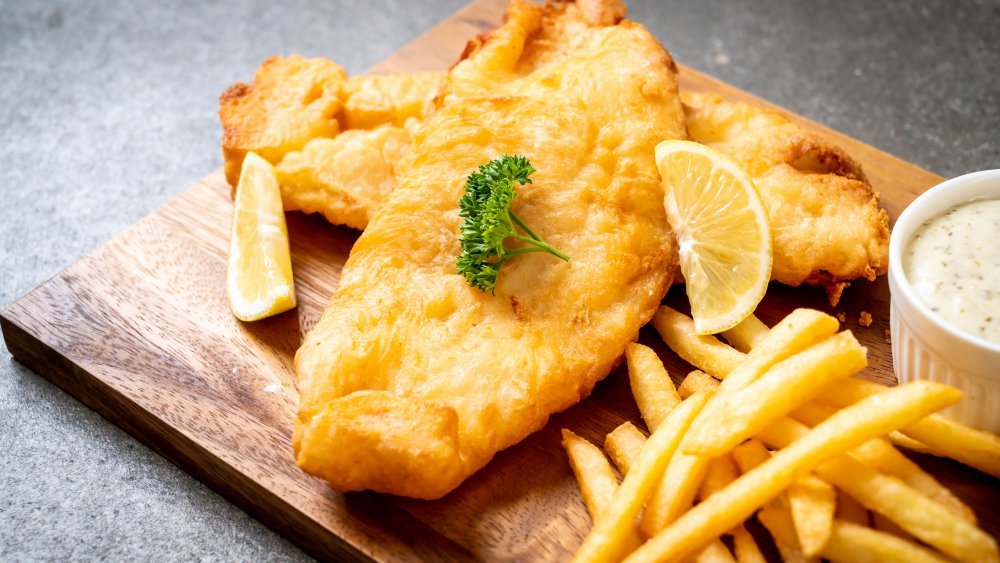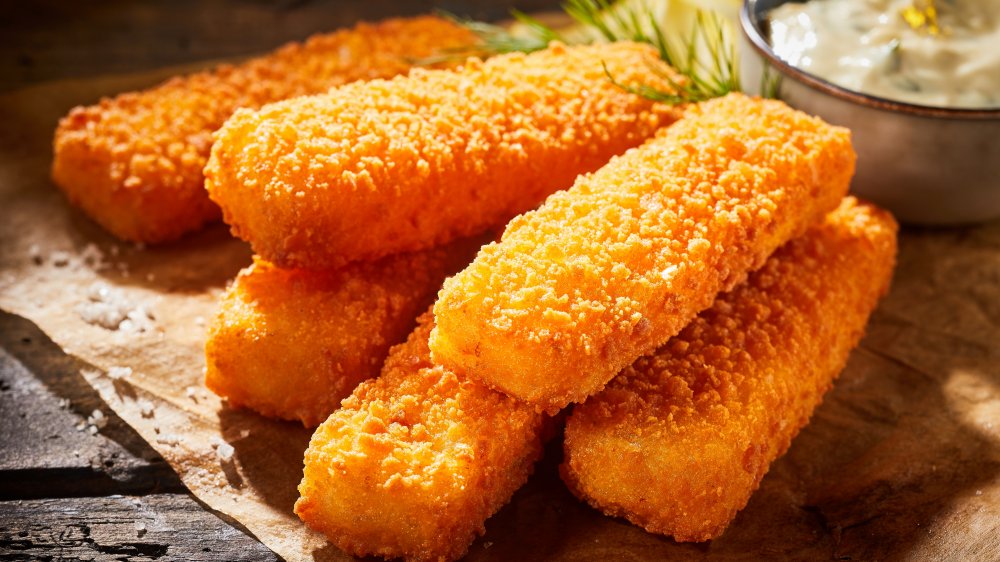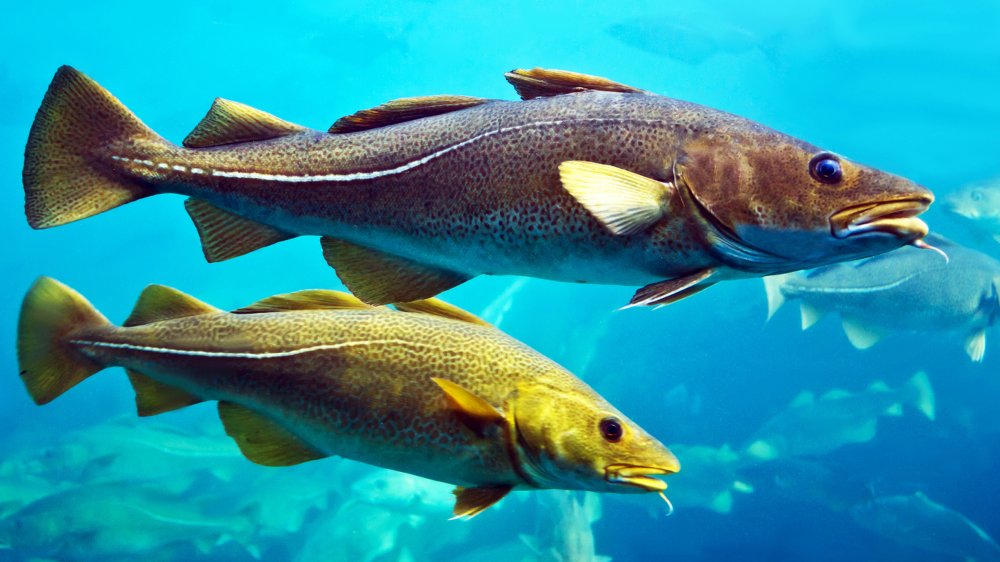The Truth About Cod
Cod is one of the most common and most popular fish options we put on our plates and in our bowls. With thick meat that flakes into juicy, bite-sized pieces and a mild taste that complements virtually any flavor, it is a versatile ingredient, beloved by even the most fish-averse eaters.
Cod tend to live in shallow waters, making them an easy sea creature to fish, which has led to widespread concern about overfishing in recent decades. Though Atlantic cod remain endangered, there are many other species of cod that are more sustainably fished in other parts of the world, providing the environmentally aware cod eater plenty of options.
The best way to eat cod varies, depending on who you ask — some swear by simple ingredients like olive oil, lemon, and salt, while others prefer to serve it with more extravagance. Regardless of how complicated you choose to make it, it's difficult to go wrong with cod, and it's perfect for beginners first learning to prepare fish.
Cod in the wild
Cod is found naturally in both the Atlantic and Pacific oceans. It is a large, dark fish covered in small spots, and a defining characteristic of all species of cod is the chin barbel, an organ that looks like a small hook beneath the fish's chin, which helps cod locate food in dark or opaque water. Though they can grow to be about 200 pounds, it is most common to find cod around 25 pounds. Still, that puts them at a large enough size to be considered a predatory fish, feeding on medium-sized fish, invertebrates, and occasionally each other.
To reproduce, female and male cod release their eggs and sperm, respectively, into the water at the same time, which is a process known as broadcast spawning. Conditions must be perfect for the sperm to successfully fertilize the eggs, making this form of reproduction largely reliant on external circumstances such as currents, water temperature, and predator density, among others. Though Atlantic cod are some of the most fecund fish in the sea, very few young cod survive to adulthood because of all these external factors that make them vulnerable.
Cod occupies an important place in American history
In the early 1600s, cod fishing became one of New England's biggest exports, creating an economy centered around the popular seawater fish. Cod fish can be preserved in salt because they're low in fat, which made it the perfect variety of fish to transport from the New World back to Europe. By the 1700s, fishing in New England made up 35 percent of the region's income, making it the most lucrative industry in the area.
The wealthy Brits across the pond worried that their own fish businesses would take a hit due to the abundant supply coming in from America, so they attempted to shut down the competition. The economic strain this created for the colonies led to increasing tensions between England and what would soon become the United States. It didn't take long after that for the New Englanders to organize behind their new nation and start the revolution that would make the U.S. an independent country. Without cod, where would we be as a nation?
Cod have become smaller over the years
Once one of the larger oceanic fish, reaching up to six and a half feet and 211 pounds, cod fish have steadily decreased in size over the last several decades, likely due to the effects of overfishing. Many smaller cod are able to escape from fishing nets, giving them an advantage over their larger counterparts. Scientists have theorized that because of this man-made threat, cod have evolved to grow slowly to survive a fishing industry that has significantly reduced their population for decades.
Cod sizes vary, averaging six to 12 pounds when closer to shore where they are frequently fished and about 25 further away. Despite their stunted growth, cod remain a predatory fish, swimming near the ocean floor to feed on lobster and other invertebrates. According to Oceana, only sharks eat adult Atlantic cod, though their younger counterparts are preyed on by several other medium-sized underwater creatures.
There are many different kinds of cod
We typically assume cod is its own a species of fish, but there are actually several different kinds of cod, each with its own subtle but unique characteristics. Atlantic cod are basically the original: This is the species that made up much of New England's economy in the early days of the nation and eventually became nearly extinct due to overfishing.
Pacific cod, otherwise known as Alaska cod, are smaller than Atlantic cod on average, and they taste less sweet. They are found mainly in the North Pacific Ocean near the coastline.
Black cod, a type of Pacific cod, is a more sustainable option for seafood-eaters. Because of their long lifespans, black cod begin reproducing early, which allows their populations to thrive even as many are caught. This kind of cod has a high fat content and a buttery flavor.
Despite the long struggle of Atlantic cod, some cod species continue to thrive despite the fishing industry. Pollock is widely known as one of the most plentiful fish to eat in the world. It's the most common fish used by fast food chains, and imitation crab often contains pollock.
Some cod are endangered thanks to years of overfishing
Between the 1970s and 2006, Atlantic cod fish became dangerously close to disappearing entirely due to decades of unsustainable fishing practices. Because of its popular demand around the world, New England's booming fishing stocks quickly became almost entirely depleted. Despite efforts to revive the cod fish population and a brief period of success between 2006 and 2017, cod numbers have continued to plummet in recent years.
Despite the imminent threat to this popular and delicious fish, policy decisions are still largely made based on company profit instead of long-term sustainability and the health of our oceans. The New England Fishery Management Council has implemented some limitations on cod fishing, but according to the Conservation Law Foundation, these measures do very little to protect Atlantic cod from extinction in the long run. In fact, in 2008, a study predicted that Atlantic cod would go extinct within 20 years. Plus, with the added complication of climate change threatening cod lives, what was once a staple in the American economy could quickly become an example of corporate greed and environmental ignorance.
Cod is (mostly) good for you
Cod, like most fish, is a healthy meat that supplies the body with a high amount of protein and low amounts of fats, calories, and carbohydrates. It is a good substitute for other meat-based proteins due to its low levels of saturated fats and high levels of omega-3 fatty acids, which have been proven to protect against heart disease, per Medical News Today.
Cod is also a good source of vitamins, such as B vitamins, and minerals like phosphorus and selenium. A three-ounce serving of cod can provide up to 30 percent of the recommended daily intake of vitamin B12, a vitamin mostly found in animal products and not naturally occurring in the human body. Vitamin B6 and niacin are also prevalent in cod and are important factors in hundreds of chemical reactions the body processes in order to function.
If you want to take your cod-based health to the next level, cod liver oil may be the way to go. Cod liver oil contains high amounts of vitamin A and concentrated omega-3 fatty acids. Because of its health benefits, it has become a popular wellness trend in the last several years.
Like most fish, cod contains mercury. Due to its moderate amounts of this toxin, though, cod fish is generally safe to eat in moderation.
The Vikings survived the dark Scandinavian winters by eating cod
In Scandinavian countries, winters are dark and cold. The Vikings survived these long, brutal months thanks in large part to their seafood diet. Cod in particular was instrumental in providing the Vikings with the nutrients needed to live through a time when comforts were few and disease was endemic.
In Europe, as people migrated across the continent and began settling farther and farther north, one disease in particular became quite common. Particularly prevalent in children, this illness caused the bones to become pliant and deformed, creating painful skeletal disfigurements in its victims. But Vikings, with their brute strength and nearly unmatched battle forces, were somehow immune to this particular disease.
It took until the 1920s for doctors to discover that what is now known as rickets in children and osteomalacia in adults, is caused by a vitamin D deficiency. When sunlight hits our skin, it turns cholesterol into vitamin D, which is a necessary nutrient for building strong, healthy bones. For many Europeans in the early days of the colonized continent, the lack of sunshine combined with a low-seafood diet resulted in severe bone deformities. The Vikings, on the other hand, ate large amounts of cod, which are rich in, among other nutrients, vitamin D.
Cod has a mild taste, so it's a versatile fish to cook with
For those who prefer a more mild-tasting fish, cod is the perfect option. Compared to more flavorful fish such as anchovies, sardines, and swordfish, cod is mild and sweet. It is best prepared simply, so its subtle flavor can be appreciated and enhanced to its full extent. The fresh, meaty flesh of the fish is best complemented by basic ingredients like lemon, butter, garlic, and fresh herbs — ideally, you'll use high-quality ingredients for a dish like this. Because it's so simple, it's important that each ingredient is flavorful and fresh.
Cod is an easy fish to cook. Its meaty flesh and mild taste give beginners a wide margin of error, and it can be prepared in a wide variety of ways. It can be poached, grilled, baked, broiled, or deep-fried and served alongside french fries. It can be tossed into a pasta for an Italian-themed evening meal or slow-roasted in a cilantro pesto and flaked apart for cod tacos.
Though cod is not native to Portugal, it has become the country's delicacy
Portugal is known for having a different cod recipe for every day of the year. Though cod do not naturally occupy Portuguese coastlines, they became a delicacy in the European nation as early as the 16th century when Portuguese fleets sailed to the Newfoundland coast and returned with cod. By burying the fish in salt, the fishermen could preserve it for the weeks it took to arrive back on Portuguese land. Ever since then, bacalhau, or salted cod, has been a staple in Portuguese cuisine.
Bacalhau can be found in almost every Portuguese restaurant, and it has been nicknamed "the faithful friend." Though it looks a little frightening (and emits quite the stench) when it is dried and hung from its tail at Portuguese markets, when re-hydrated and prepared with ingredients such as potatoes, onions, or scrambled eggs, bacalhau is transformed into a delicious local specialty beloved by locals and tourists alike. One of the most famous Portuguese dishes, bacalhau a bras, serves the salted cod with other traditional Portuguese ingredients, such as eggs, potatoes, and black olives.
Cod is one of the most commonly used types of fish you'll find in fish and chips
Although fish and chips are not as popular in the United Kingdom now as it was in the 1920s when 35,000 fish and chip restaurants dotted the country, it remains one of the Brits' favorite meals. The UK population eats about 382 million fish and chip plates per year, and the most common fish found battered and fried alongside french fries is the meaty, flaky flesh of cod.
It's the juiciness of cod's meat that makes it taste exceptionally delicious when contrasted with a crunchy breaded crust. According to BBC News, cod makes up 61.5 percent of the fish served in "chippies," but other kinds of fish can be used, such as haddock, halibut, and pollock. The fish is tossed in a flour- or breadcrumb-based batter and deep-fried. UK fries are typically made with larger pieces of potato than American fries are, making for a thicker french fry than most Americans are accustomed to. It is traditionally served with mushy peas, but that part of the dish has not caught on quite as much as the other (perhaps more palatable) deep-fried components.
Cod wasn't always as popular as it is now
Despite its long history and popularity in the United States, cod was not always considered a high-quality seafood option. Similar to the way pollock is often served today, cod was once relegated mainly to fast food chains and school cafeterias, where its affordability made it the perfect filler for cheap seafood-based items.
According to The New York Times, in the early '90s, high-end restaurants and chefs began incorporating cod into their menus with increasing frequency, inspired by the fish's mild flavor and low price tag. Chefs began replacing more expensive fish, such as red snapper or tuna, with cod, and as if overnight, it became a trendy menu item in popular restaurants. Because cod was thought of as "common," pretentious chefs and diners had avoided it for years. But as it became more prevalent on expensive menus in dimly lit restaurants, their fancy taste buds, apparently, grew to enjoy the (really quite inoffensive to begin with) taste of cod.
Cod livers are arguably the healthiest part of the fish
Fish oils have been popular nutrition supplements since the 1990s, when they were largely pronounced by the media as a "miracle pill," particularly for those with cardiovascular disease. The oil extracted from cod liver carries many of the same benefits as other fish oils, namely its high amounts of omega-3 fatty acids, which are polyunsaturated fats that do not occur naturally in the body. Omega-3 fatty acids have many health benefits, such as improving mental health, fighting inflammation, and supporting cardiovascular systems.
The oil from a cod's liver is particularly healthy due to its concentrated amounts of vitamin D and other vitamins. Vitamin D helps bones grow properly and is essential to the proper functioning of the immune system. While the human body can create some amount of this nutrient on its own or get sufficient amounts through daily activity, many people — especially those who live in climates where the sun isn't always shining — need a little more.
Atlantic cod are threatened by climate change as well as overfishing
The Gulf of Maine, where Atlantic cod have been fished for decades, is one of the most rapidly warming parts of the ocean. The cod that swim these waters prefer temperatures less than 53 degrees Fahrenheit, and as the New England waters creep toward that limit, cod and other fish native to the area have begun migrating north and farther from the shoreline in search of colder temperatures.
Cod are not able to reproduce as successfully in warmer waters as they are in the cold waters they are accustomed to, which puts their populations at risk of plummetting even more than they already are in these changing seas. As cod populations decline, fisheries have not been able to mitigate the problem sustainably, causing multiple threats to the future existence of Atlantic cod. Climate change has exacerbated the overfishing that has endangered cod for decades, and it will only make it more difficult to bring cod populations back up, even if commercial fisheries drastically reduce the number of fish they catch.
Experts and officials must ask themselves what they can do to ensure the cod's continued success in our oceans — especially if we still want to see them on our dinner plates.
